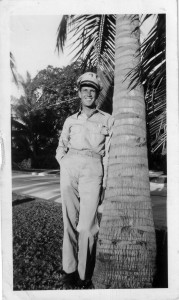 In a previous post, we talked about digitizing home movies and video, and how best to store the original media. In this post, we will discuss your photographs, particularly those taken in the pre-digital age.
In a previous post, we talked about digitizing home movies and video, and how best to store the original media. In this post, we will discuss your photographs, particularly those taken in the pre-digital age.
Just about everybody has a few shoeboxes full of old family photos and negatives. It can be positively overwhelming to even get started when faced with a disorganized jumble of hundreds of family photos, but cardboard, wood, and many plastics give off gases that will damage your photographs, so it really is worthwhile to set up a system that will preserve your old photos and negatives, and that will preserve your sanity as you move forward with your digital collection.
Take a deep breath and dive in. You will be glad you did. Here are a few steps to help you along the way:
- Using photo storage boxes made of acid-free, photo-safe materials (these are relatively inexpensive and readily available at craft stores), make a run at organizing your prints and negatives by year and/or event. This can be tricky, and it is easy to get bogged down, so don’t get too fanatical about it, just take a guess and keep moving. You can always fine tune later. The photo storage boxes include tabbed index cards that will help you with this process.
- Take the time to weed out blurry photos, duplicates, etc. Not all photos are priceless family heirlooms, so get rid of prints that are just taking up space.
- Now that you have decided which ones are really worth keeping, don’t ever throw them away. Even if you are planning to scan your old photos, digitized images are not a replacement for originals, as data can be lost, and software and hardware technology become obsolete faster and faster these days.
- Once you have the photos organized, you can begin to digitize them. You can do this yourself if you have a good scanner — many printers these days are “all in one” and include a scanner.
Some basic tips:
- Clean the scanner and the photos. Microfiber cloths and glass cleaner are your friends here.
- Decide on a naming system and file folder location for storing the scanned photos on your computer.
- Scan as many photos at once as you can – you may be able to fit as many as four 4×6 photos on the scanner bed – and crop them later. Use a resolution of at least 300dpi (up to 600dpi if you plan to enlarge).
- Some scanning software even has basic editing features, like red-eye removal and color correction. You might want to take advantage of this as you scan, or you might want to edit them on an as-needed basis with more sophisticated photo editing software like Photoshop, if you have it.
- If you have hundreds of photos, set up a reasonable schedule. Scan for an hour a day, or a couple of hours a week, and eventually it will all get done.
- If scanning your own photos sounds like too much work, you can find many services that will do this for you.
Now, moving forward, you need to think about the best way to organize your digital photos. These days, instead of getting lost in a shoebox at the back of the closet, photos can get scattered on different hard drives, SD cards, and electronic devices. Uploading photos to the files you created for your scanned photos is a great place to start, but you might want to consider some online storage options as well. CNET has an excellent article to help you evaluate the best ways to store you photos online
Once this process is complete, take a moment to give yourself a pat on the back. It really is a big job, and future generations will thank you. It is finally time to store those well-organized, photo-safe boxes in a cool, dry place – like an air-conditioned storage unit at Dollar Self Storage!